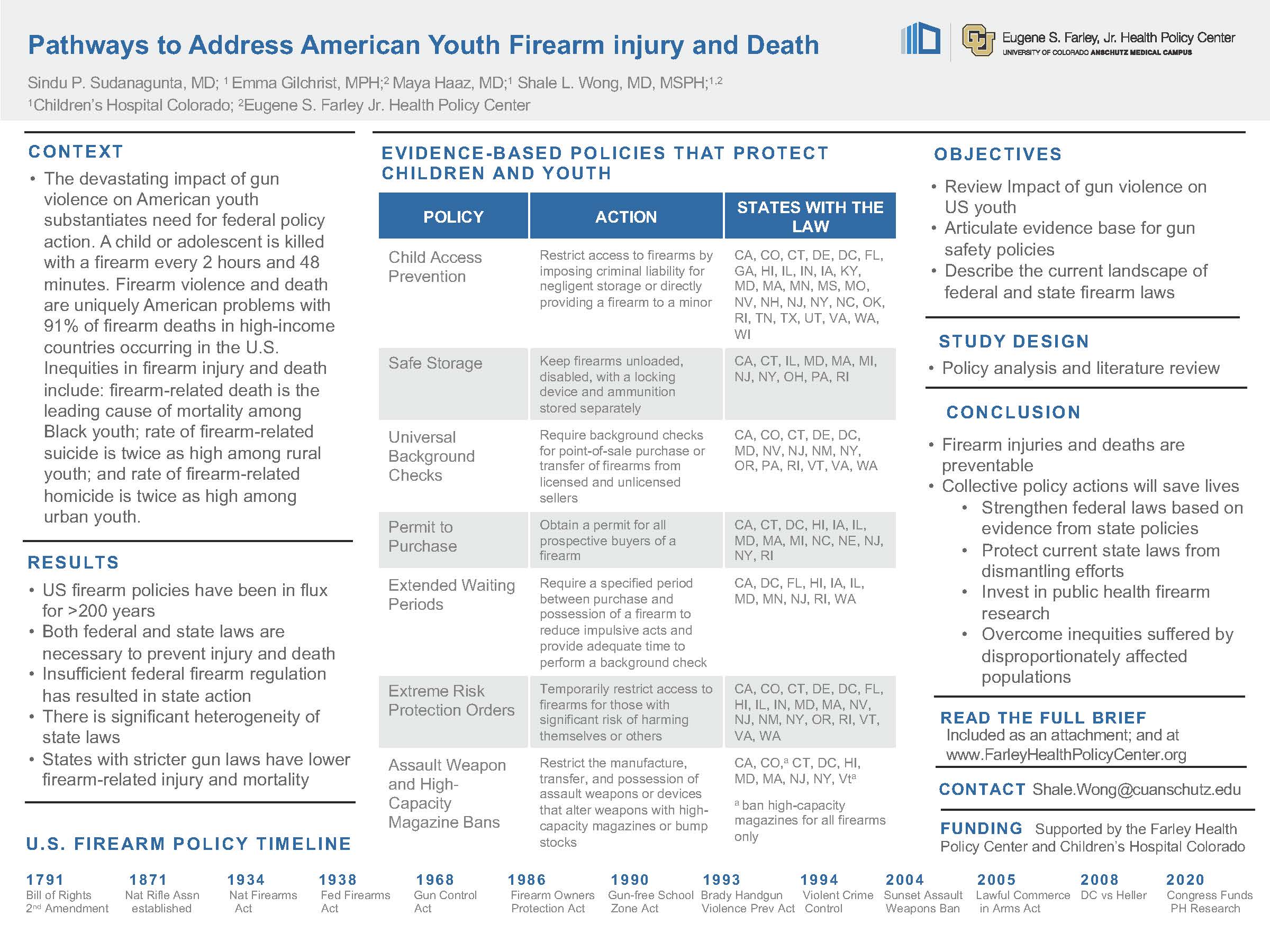PCR053: Policy Pathways to Address American Youth Firearm Injury and Death
Shale Wong, MD, MSPH; Sindhu Sudanagunta; Emma Gilchrist, MPH; Maya Haasz, MD
Abstract
Context: The burden of firearm violence and death are uniquely American problems. Over 90% of firearm deaths among children and adolescents in high income countries occur in the United States. Despite similar overall crime rates, the gun homicide rate is about 25 times higher in the U.S. than other Western democracies, and 49 times higher for those aged 15-24 years. Firearm-related injuries are a leading cause of child and adolescent deaths, second only to motor vehicle crashes. Approximately 4.6 million children are living in U.S. homes with at least one loaded, unlocked firearm. Reducing gun violence injuries and deaths is imperative and requires a multifaceted approach. Objectives: Review the impact of gun violence on youth across the U.S.; articulate the evidence base for gun safety policies; describe the current landscape of federal and state firearm laws. Study Design: Policy analysis and literature review. Results: The history of U.S. firearm policy demonstrates laws in evolution from 1791-2021, regulating both gun owner rights and restrictions. These firearm policies, existing in a variety of forms in states and nationally, reveal evidence that gun safety legislation saves lives: Child Access Prevention; Safe Storage; Universal Background Checks; Permit to Purchase; Extended Waiting Periods; Extreme Risk Protection Orders; Assault Weapon and High Capacity Magazine Ban. The dearth of federal law has resulted in more extensive state legislation but with variability and inconsistencies. No single law or policy reduces all forms of gun violence, but states with a variety of firearm policies have a cumulative impact on reducing injuries and death. Conclusions: We aim to promote education, physical safety, and behavioral health so that children can achieve their highest potential. Decreasing firearm injury and death is achievable with education, collaboration, research, and policies. To protect children and youth from firearm injury and death, we must: strengthen federal laws building on evidence from state policies; protect current evidence-based state laws from dismantling efforts; invest in public health firearms research; overcome the inequities suffered by disproportionately affected populations.

Jack Westfall
jwestfall@aafp.org 11/20/2021This is a great topic and research study. Nice work. Thanks